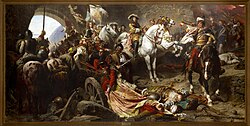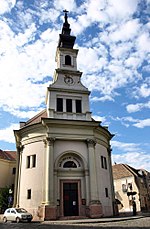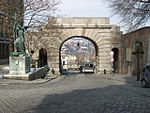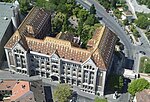Koller Gallery
1953 establishments in HungaryArt galleries established in 1953Art museums and galleries in HungaryContemporary art galleries in EuropeMuseums in Budapest ... and 1 more
Sculpture galleries

The Koller Gallery is a private gallery in the Castle District of Budapest, founded in 1953. At the top floor of the three storied atelier-house, there is a memorial room for the Hungarian artist Amerigo Tot.
Excerpt from the Wikipedia article Koller Gallery (License: CC BY-SA 3.0, Authors, Images).Koller Gallery
Kemal Atatürk sétaút, Budapest Tabán
Geographical coordinates (GPS) Address Nearby Places Show on map
Geographical coordinates (GPS)
| Latitude | Longitude |
|---|---|
| N 47.503536 ° | E 19.032522 ° |
Address
Vár
Kemal Atatürk sétaút
1013 Budapest, Tabán
Hungary
Open on Google Maps











